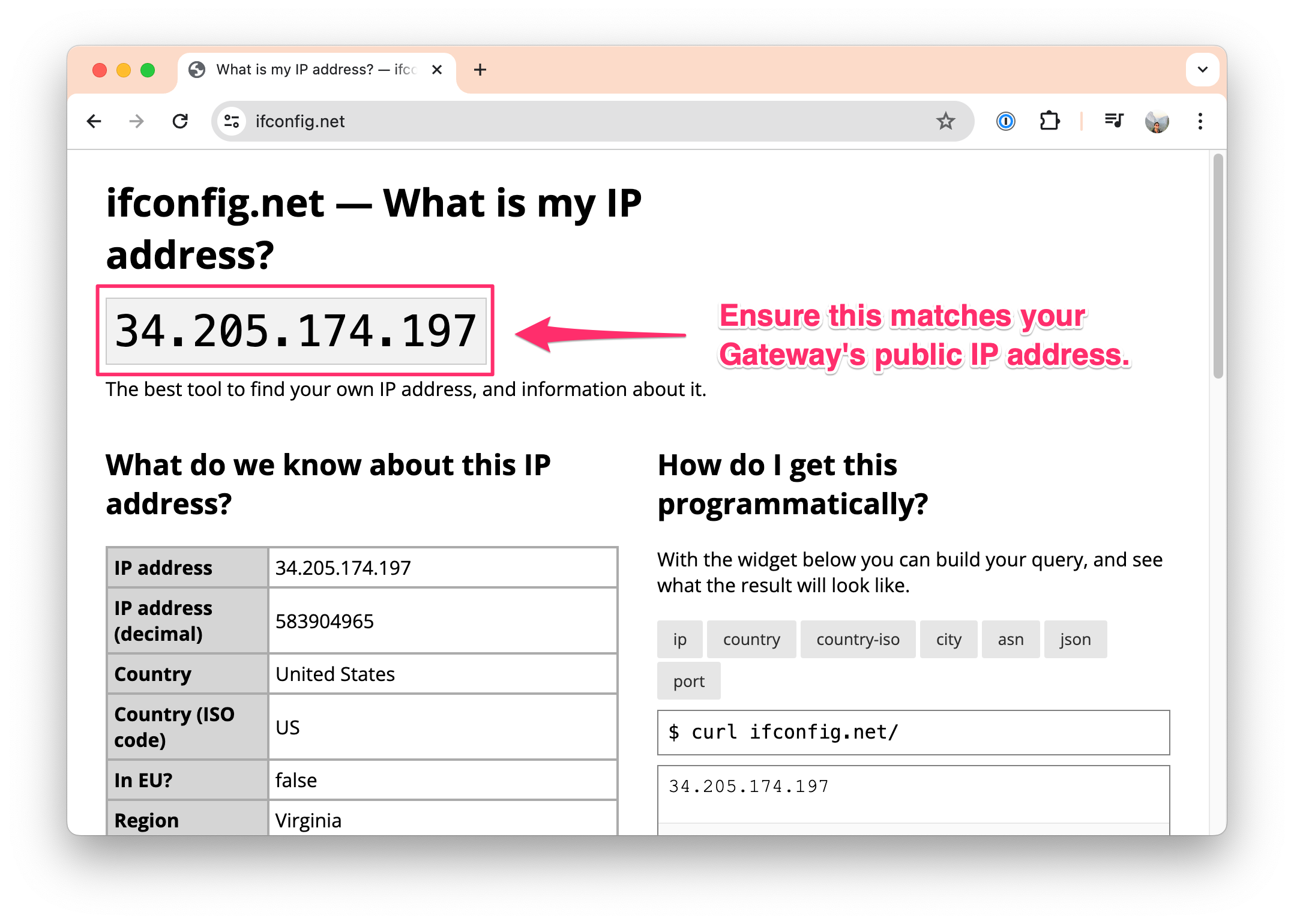Route Traffic Through a Public IP
In this guide, we'll walk through the configuration required to use Firezone to route traffic through a public IP address, sometimes known as a NAT Gateway configuration.
Use this when you need your team's traffic to appear to come from a single, static IP address to use services that require source traffic to come from specified IP allowlists.
After completing this guide, your team's traffic will be routed to a Firezone Gateway and then out to the internet using its public IP address.
See our our Terraform examples for a high availability example of this guide using Terraform on Google Cloud Platform.
Prerequisites
- A Site reserved for this use case. Create a Site if you haven't already.
- One or more Gateways deployed within the Site. Deploy a Gateway if you haven't done so yet.
This guide assumes the Gateway has a public IP attached. This is required to function as a NAT gateway.
Step 1: Create Resource(s) matching the traffic you want to route
- In your admin portal, go to
Sites -> <site>and click theAdd Resourcebutton. - Add Resource(s) for each service that requires an IP allowlist. For example,
if you need traffic to
*.gitlab.company.comto appear to come from your Gateway's public IP address, you would enter*.gitlab.company.comas the Resource address. - Optionally, add a Resource with address
ifconfig.netto the Site as well. This will be used later to verify that your traffic is being routed through the Gateway's public IP.
Step 2: Create Policies
- In the
Policiestab, click theAdd Policybutton. - Create a Policy for each of the Resources you created in Step (1). Be sure to select the appropriate Group and Resource for each Policy.
Step 3: Done!
That's it!
If you added the ifconfig.net Resource above, you can verify that your traffic
is being routed through the Gateway by visiting https://ifconfig.net in your
browser and ensuring the IP displayed matches the public IP address of your
Gateway.

Need additional help?
See all support options or try asking on one of our community-powered support channels:
- Discussion forums: Ask questions, report bugs, and suggest features.
- Discord server: Join discussions, meet other users, and chat with the Firezone team
- Email us: We read every message.